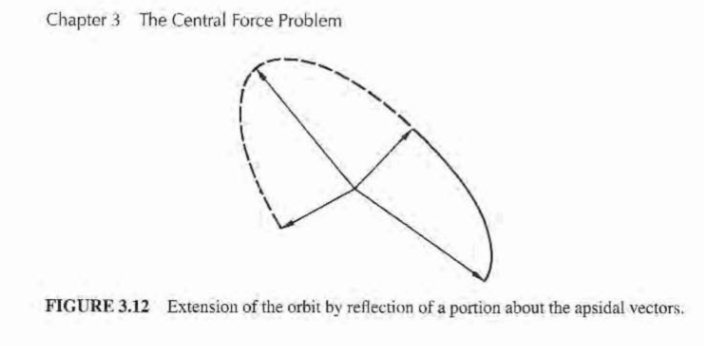In the book of Classical Mechanics by Goldstein, at page 88, it is given that
However, the orbit might not be bounded, so there might not be two turning point; just one. In such a case, how can we argue that the orbit equation always has two turning points and it is symmetric about both axes?


